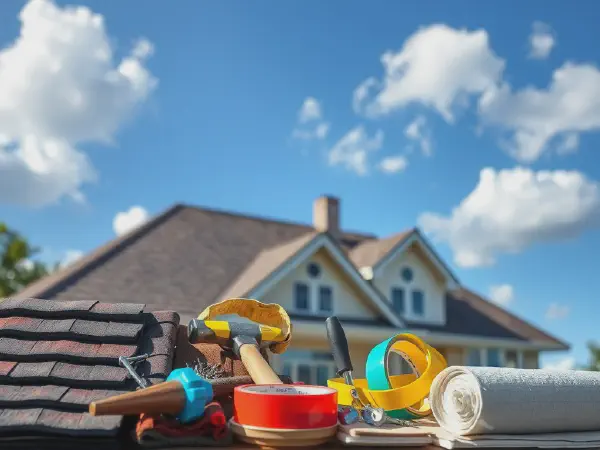Essential Roof Repair Tips for Homeowners and Professionals

Understanding Roof Repair: Essential Insights and Techniques
Roof Repair is a crucial aspect of home maintenance that ensures the safety and longevity of your property. A well-maintained roof shields your home from harsh weather elements, preventing leaks and structural damage. Regular roof repair can save homeowners significant costs in the long run, making it an essential investment.
When looking for top-tier service, turn to the roofing experts narre warren who guarantee quality and durability.
When it comes to Roof Repair, identifying the specific issues is vital to effective resolution. Whether it's cracked shingles, leaks, or damage caused by weather, knowing the type of repairs needed helps in addressing the problem promptly. Moreover, understanding the unique characteristics of your roof—like the materials used, age, and design—will assist in planning efficient repair methods.
Homeowners often overlook minor issues until they escalate into larger problems. Thus, understanding the basic concepts of Roof Repair, such as preventive measures and timely interventions, is crucial. Additionally, being well-informed about the various repair techniques available can empower homeowners to make better decisions concerning their roofs and overall home health.
Furthermore, hiring professional roof repair services can often be beneficial, especially for significant damage or complex repairs. Professionals have the expertise, tools, and knowledge to ensure repairs comply with safety standards and building codes. However, knowing the basic principles of Roof Repair can help homeowners communicate effectively with professionals and understand the work being done.
For homeowners seeking peace of mind, investing in reliable roofing solutions is essential to protect their property.
Overall, mastering an understanding of Roof Repair can lead to a safer home environment and avoid unnecessary financial burdens caused by neglect. It's an essential skill set for all homeowners, empowering them to protect their investment and enhance the value of their property.
Types of Roof Repair
One common type of Roof Repair involves shingle replacement techniques. Shingles can become damaged due to strong winds, heavy rains, or simple wear over time. In a shingle replacement, professionals will carefully remove the damaged shingles, assess the underlying structures, and install new shingles, ensuring a seamless fit and waterproofing.
Leak repairs and sealing methods are another critical area of Roof Repair. Roof leaks can cause extensive damage if left untreated and may require various sealing methods, including membrane systems or liquid sealants. These approaches depend on the leak's location and the roof's material, ensuring a reliable seal against water intrusion.
Flashing repair and installation is essential in Roof Repair, particularly around chimneys, vents, and skylights where water can infiltrate. Proper installation and repair of flashing can prevent water from seeping into the roof deck, thus protecting interior spaces from leaks and damage.
Roof patching and maintenance techniques are also vital in the Roof Repair process. Patching small areas can prolong the lifespan of the roof, minimize the impact of severe weather, and prevent more costly repairs in the future. Regular maintenance techniques, including checking for debris and ensuring adequate drainage, are essential practices for roof longevity.
Common Roof Problems
Identifying roof leaks is a common challenge for homeowners, which can often be elusive. Signs of leaks may include water stains on ceilings, mold growth, or drips during storms. Tracking these indicators can help in the early detection of leaks, ultimately facilitating timely repairs.
Signs of damaged shingles are also critical in assessing roof health. Missing or curled shingles, granule loss, or cracked surfaces can indicate underlying issues that may require Roof Repair services. Regular inspections can help detect these signs before they lead to more significant problems.
The impact of weather on roofing materials is undeniable. Extreme temperatures, heavy rainfall, ice, and snow can all contribute to wear and tear, leading to problems such as warping, buckling, or leaks. Being aware of how weather affects your roof will help you be proactive in repairs.
Mold and algae growth on roofs can be both an aesthetic issue and a sign of potential damages. Dark streaks on roofing materials may indicate algae presence, which can lead to premature aging of shingles. Regular cleaning and maintenance can prevent growth, ensuring a healthy roof.
DIY Roof Repair
Before starting any DIY Roof Repair, it is essential to take safety precautions. Use of proper gear, such as harnesses, gloves, and sturdy footwear, is crucial. Moreover, ensuring stable ladder placement and checking weather conditions are important to maintain safety while working on the roof.
Basic tools required for roof repair typically include a ladder, hammer, roofing nails, a utility knife, and a caulking gun. Depending on the repair complexity, additional tools like a pry bar, roofing material specific to the project, and a safety harness might be necessary.
For a step-by-step guide to patch a leak, start by assessing the leak's source. Remove any damaged roofing material around the leak, clean the area, and apply a generous amount of roofing cement. Place a new patch over the leak, followed by another layer of cement to seal edges properly. Ensure it is smoothed out to prevent water pooling.
It's advisable to call a professional for Roof Repair when facing extensive damage or when the repairs involve danger, such as working on steep slopes or in adverse weather conditions. Experts have the experience and tools to handle problems that may be challenging for the average homeowner.
Cost of Roof Repair
Factors affecting roof repair costs include the type of repair needed, the roofing material, complexity, and labor charges. Additionally, your geographical location may also influence the overall costs due to local market conditions and material availability.
Average pricing for different types of repairs can vary widely. Minor repairs, such as shingle replacements, can range from $100 to $500. More complex repairs, such as full leak repairs or flashing installation, can range from $500 to several thousand dollars, depending on the extent of the damage.
Insurance coverage for roof repairs often depends on the policy type and the cause of the damage. Homeowners should check their insurance policy to see what repairs are covered, which could significantly alleviate out-of-pocket expenses during repairs.
Financing options for homeowners facing expensive roof repairs include professional loans, personal loans, or in some cases, payment plans offered by roofing companies. Exploring various financial avenues can provide homeowners with manageable ways to handle unexpected repair costs.
Preventative Roof Maintenance
Regular inspections and their importance cannot be overstated. Homeowners should inspect their roofs at least twice a year, looking for damage, debris, or signs of leaks. Early identification can help in preventing costly repairs down the line and ensure the roof's longevity.
Cleaning gutters to prevent roof damage is an essential maintenance tip. Clogged gutters can cause water to pool on the roof, leading to leaks and structural issues. Regular cleaning and maintenance of gutters can avert these problems and promote proper water drainage.
Seasonal roof maintenance tips include preparing roofs for winter by clearing debris, checking for loose shingles, and ensuring insulation is adequate. During the spring or fall, closely inspecting for damage can help in prolonging the roof's life and maintaining its overall quality.
The benefits of roof coatings and sealants can be substantial, acting as an additional layer of protection against UV rays and moisture. Utilizing these products can enhance the longevity and performance of roofing materials while offering cost-saving benefits in the long run.
